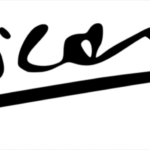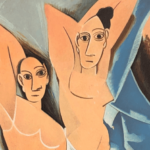
Interesting Pablo Picasso Facts (Plus A Bonus)
COOL PICASSO INTERESTING FACTS YOU DIDN’T KNOW ABOUT
One of the most important museums in Barcelona is the Picasso Museum. And you might be wandering why do we have a Picasso museum if the artist was born in Malaga and lived most of his life in France? Well, he actually spent his youth and training years in Barcelona, and here remained his parents, sister and many good old friends. So now you understand that Pablo Picasso is together with Antoni Gaudi and Salvador Dali one of the most acclaimed local geniuses.
And like the other three, Picasso’s life is full of facts and stories that are intimately connected with his art. Many books have been written about him, telling you about his friends, his passion for art and the way he saw the world. They are thick books with tiny letters, and while all their facts can be really helpful to give you a more accurate perspective when you visit the Picasso Museum… you might just not have enough time to read them on time for your trip!
These are our favorite Picasso life facts:
1
What happened during his birth
Although many people think Picasso was French because he spent most of his life in France, the truth is he was born in Spain in the town of Malaga, South of Spain, in 1881. It is said when we has born he wasn’t breathing or crying, so his uncle blew some cigar smoke into his face and that made the baby finally react.
An interesting beginning for Picasso early life. It’s not strange either that he became a smoker and he also painted numerous paintings of man and women smoking cigarettes and cigars.
2
Why he ended up growing in Barcelona
In 1895, after spending a short period living in the North of Spain, Picasso’s father got a job as an art teacher in the best art school of Barcelona and the Picasso family moved here. They lived in several apartments, always close to the Port Vell. The child was already so good at painting that he got a special permission to study in that school even if he was still a high school kid, too young compared to the other students.
So Barcelona is so important in the biography of Pablo Picasso because here he spent his training period, made long-lasting friendships and accessed adulthood. He even learned to speak Catalan and used it often with his friends, even when he moved to Paris later on in his life. You can learn more about this part of Picasso life in our Picasso tour.
3
What caused the Blue Period
A terrible experience in Picasso’s life made him completely transform his style and entering what would be later on known as the Blue Period. It was the beginning of his stay in Montmartre, Paris, a tough time with little money, not many clients, hunger and cold. His best friend and roommate Carles Casagemas committed suicide during dinner at a local restaurant after trying to kill the woman he loved and failing to.
To exorcise his terrible shock and deep sadness (and probably because he couldn’t afford more expensive colors either – red, for instance, was more costly because its chemical composition included gold), he started painting using mostly blue shades.
He also felt more comfortable painting humble and suffering people: prostitutes, people sick in hospital or mental institutions, beggars, prisoners… The Blue Period was going to last around a couple of years before it evolved into the Rose Period – pretty much around the time he started dating his first French girlfriend, Fernande Olivier.
4
How he came up with Cubism
Although the origin of Cubism isn’t clear (the artist would explain one story in an interview, just to deny it in the next), the most accepted Picasso facts about how Cubism started relate it to an exhibit of African masks he visited in Paris. The fascination for their geometric shapes would have been the inspiration that led him to change the History of Art.
The Romanesque paintings he had seen in the MNAC museum of Barcelona, and some Iberian statues from the Louvre museum (that by the way he was accused to have stolen), could have been an influence as well. This new style was so wild for the mentality of the time, that people would give condolences to his girlfriend thinking he had just got mental.
5
Guernika and the nazis
In 1936 started the Spanish Civil war and General Franco was helped by the Nazis to defeat the Spanish Republic. The Basque town of Guernika was bombed and hundreds of civilians died. One of Pablo Picasso famous paintings represented the horror of the bombing: the Guernika is a huge black and white painting that was displayed in the Paris World Fair in 1937.
A few years later, World War II started and Paris was taken by the Germans who did not approve of contemporary art. It is said that once some Nazi soldiers entered Picasso’s workshop and one of them, sawing the Guernika painting, asked in a despising tone if it was Picasso who had done that. To which Picasso answered: “No, I didn’t do it: you did it”.
AND BONUS! Want some Picasso facts about his love life?
6
Love life
The biography of Picasso is full of women. He married officially twice: first with Olga Koklova, with whom he had his first child Pablito, and at the end of his life with Jaqueline Roque who was 46 years younger. Before Olga he had two significant lovers: Fernande Olivier and Marcelle Humbert. And afterwards came Marie Thérèse Walter (mother of Maya), Dora Maar and Françoise Gilot (mother of Claude and Paloma).
That’s without counting the many other lovers and girlfriends that were never achieved a relevant role in Picasso life… He wasn’t easy to be with: most of the times he’ll suck out the energy from his partners and then quit them (often to replace them immediately by someone else). Two eventually weren’t able to rebuild their lives after Picasso and committed suicide (as did his son Pablo).
You can often follow the transformation of each relationship through Picasso’s paintings. Not only in the way he depicts them, but also on the way he uses the metaphor of bulls and horses from corridas. Unfortunately this post is too short to explain that, but if you take a tour of Picasso Museum of Barcelona with me, I’ll tell you the whole story.
Any other Picasso facts you’d like to share with us?
Marta
MORE BARCELONA TIPS FOR YOU:
SHARE WITH YOUR TRAVEL MATES
RESEARCHING FOR A TRIP IS TIME-CONSUMING…
Need more inspiration?
Our 100% FREE Barcelona Collection will give you everything you need to organize the trip of your lifetime to Barcelona.
BEST INSIDER TIPS FROM THE PROS!













